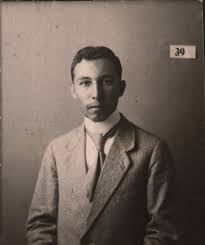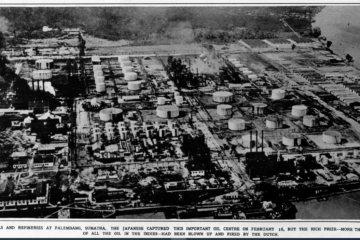
Charles Olke van der Plas (1891–1977) was a senior Dutch colonial administrator from Buitenzorg (now Bogor), Java. His longstanding service in the Netherlands East Indies (NEI) and his deep knowledge of local society—including fluency in Arabic and Malay and a strong understanding of Islam—marked him as an expert in indigenous affairs. He was widely respected for his ability to engage diplomatically with both nationalist and religious leaders in the Indies.
Van der Plas served in various regional roles in Java and was Dutch consul in Jeddah, Saudi Arabia (1921–1926). He was heavily influenced by the work of Islamic scholar Christiaan Snouck Hurgronje and developed a pragmatic, culturally informed approach to colonial governance. Although deeply knowledgeable about Islam, Van der Plas was not a Muslim himself; he remained a Dutch colonial official committed to maintaining order through cooperation and reform.
After the Japanese invasion of the NEI in 1942, Van der Plas fled to Australia alongside Hubertus van Mook, who was made the Vice Governor-General of NEI, days before his departure. Van der Plas became a leading figure in the exiled Dutch administration. He was appointed vice-governor-general of the NEI and served as Van Mook’s principal deputy.
In 1943, Van der Plas led a significant humanitarian mission. He travelled by boat over 200 kilometres up the Digul River to Tanah Merah in Papua to organise the evacuation of NEI political prisoners held there, including prominent Indonesian nationalist leaders. With the support of General Douglas MacArthur, Van der Plas arranged their transfer to Australia, overcoming resistance from Australian authorities influenced by the White Australia Policy.

In 1944, the Netherlands East Indies government-in-exile was formally established in Brisbane. Van der Plas was appointed director of the Department of the Interior and chairman of the Board of Departmental Heads. While he no longer held the title of vice-governor-general, his responsibilities made him the most senior civilian administrator under Van Mook. He helped coordinate internal administration and advised on postwar reconstruction policy, particularly for Java.
Following the Japanese surrender in 1945, Van der Plas returned to the NEI and was appointed governor of East Java. He became a key figure in the Dutch attempt to implement a federal structure for Indonesia, supporting the establishment of the short-lived State of East Java as part of the United States of Indonesia model. However, this effort failed to win support among Indonesian republicans or sustain political backing in the Netherlands. The federal solution collapsed, and with it, Dutch colonial control.
Van der Plas retired from public life in 1947 and returned to the Netherlands. He died in Zwolle in 1977. Although he never published a memoir, his career reveals the tensions of late colonial administration: reform-minded yet constrained, culturally informed yet bound by imperial structures. His contributions to wartime planning, refugee rescue, and federal policy place him alongside Hubertus van Mook as one of the key transitional figures in the final chapter of Dutch rule in Indonesia.
See also:
- Reform or restoration? Political tensions over the future of the Netherlands East Indies during wartime exile.
- Wartime reform and Indonesian voices: Dutch–Indonesian political tensions in exile.
- Frustration and fortitude: the Dutch purchasing mission and wartime tensions in Australia
- From indifference to diplomacy: how the war transformed Dutch–Australian foreign relations

